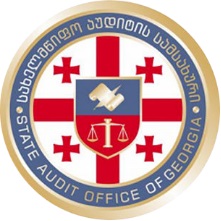A major focus of the State Audit Office (SAO) of Georgia is to examine the effectiveness of the government’s public debt management. To that end, SAO Georgia conducted an audit in 2020 to follow up on the implementation of recommendations it issued in 2015 to improve public debt management practices.
Public debt management is of particular importance for ensuring fiscal and macroeconomic stability. When governments effectively manage public debt, the raised funds serve as a stimulus for economic growth, whereas ineffective management can lead to economic crisis. During the COVID-19 pandemic, when the global debt level has increased significantly, the risks associated with debt sustainability have become particularly pressing.
SAIs can play an important role in ensuring sound and transparent public debt management by conducting independent, high-quality audits of public debt. These principles were laid out in the Guidance on the Audit of Public Debt (GUID 5250) adopted at the 2020 International Congress for Supreme Audit Institutions (INCOSAI).
SAO Georgia, as an active member of the INTOSAI Working Group on Public Debt—which aims to share and develop best practices for public debt management—believes that its experiences in this field may serve as a useful case study for other SAIs.
SAO’s Follow-up Performance Audit on Public Debt Management found that from 2014 to 2019, Georgia’s public debt doubled, to 42 percent of the projected Gross Domestic Product (GDP) at the end of October 2019. Seventy-eight percent of total public debt at that time was external, i.e., borrowed from international financial institutions or bilateral creditors in foreign currencies.
This rise in public debt was driven by increased borrowing and by depreciating the national currency. The public debt ratio grew further as a result of the pandemic, and it was projected to equal 57.9 percent of the GDP by the end of 2020.
SAO Georgia’s 2020 audit also found that while the government had taken some positive steps to manage public debt, it had implemented only four of SAO’s nine recommendations. SAO identified the following deficiencies:
The definition of public debt was incomplete and did not align with international standards. Georgia’s public sector debt limits are set by two different laws, one of which the government uses to calculate the annual debt limit, and the second of which it uses to calculate the debt rule. These differences in limits do not align with the International Monetary Fund’s Government Finance Statistics Manual (GFSM 2014).
Contingent liabilities were not represented in budget documents. Contingent liabilities are not defined by law for the purposes of producing statistics of public finances. Consequently, the government did not take into account the total volume of contingent liabilities when formulating its budget.
SAO conveyed to the government the potential risks arising from this issue to the Pension Agency and the Deposit Insurance Agency. For instance, in the event of a commercial bank’s liquidation, insolvency, or bankruptcy, the state is obligated to reimburse each affected deposit holder up to GEL 15,000 (nearly 5,000 U.S. dollars or around 4,000 euros).
The government had not defined the roles and responsibilities of various parties in determining the need for credit. The government had no formal guide or methodology that described the roles, responsibilities, or structural units involved in the process of determining the need for net borrowing at the budget-planning stage. This type of document is crucial to ensuring the transparency, continuity, and accountability of the process.






